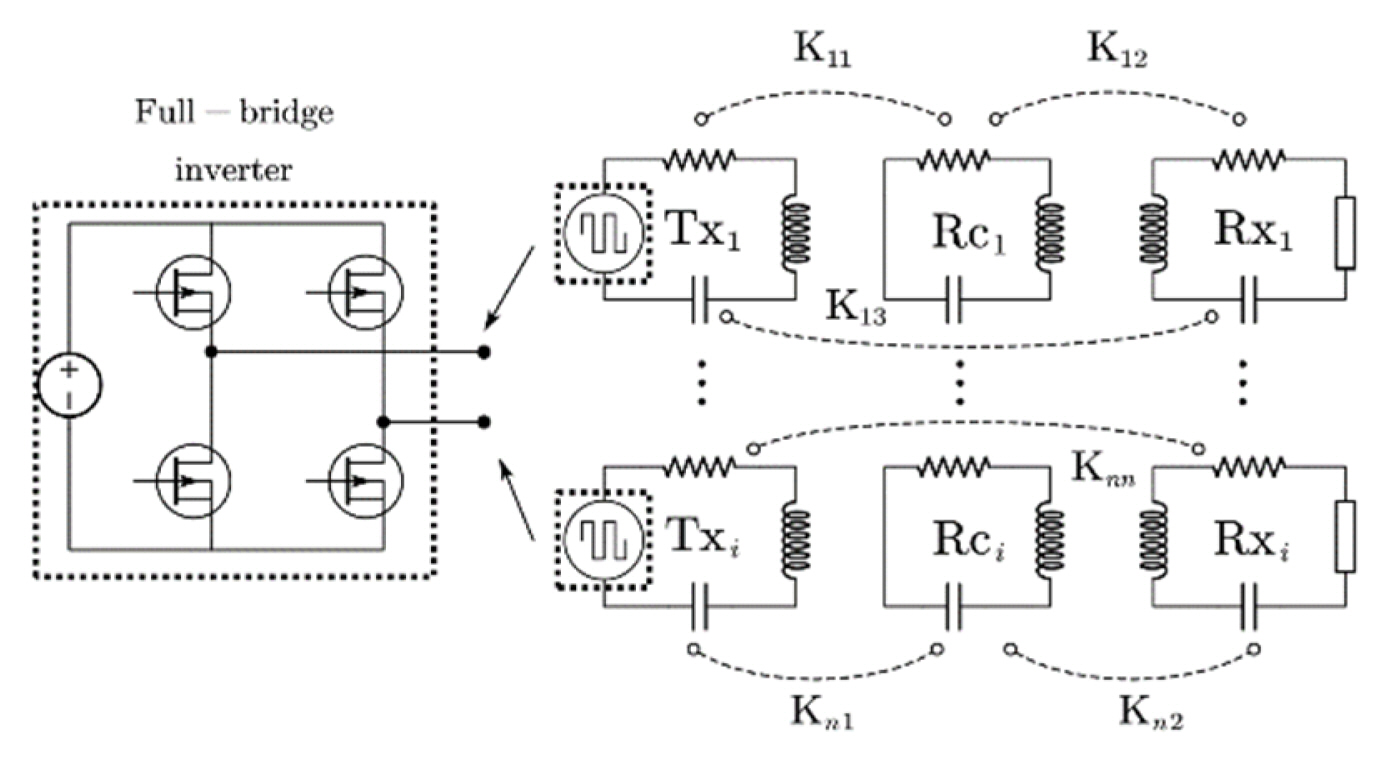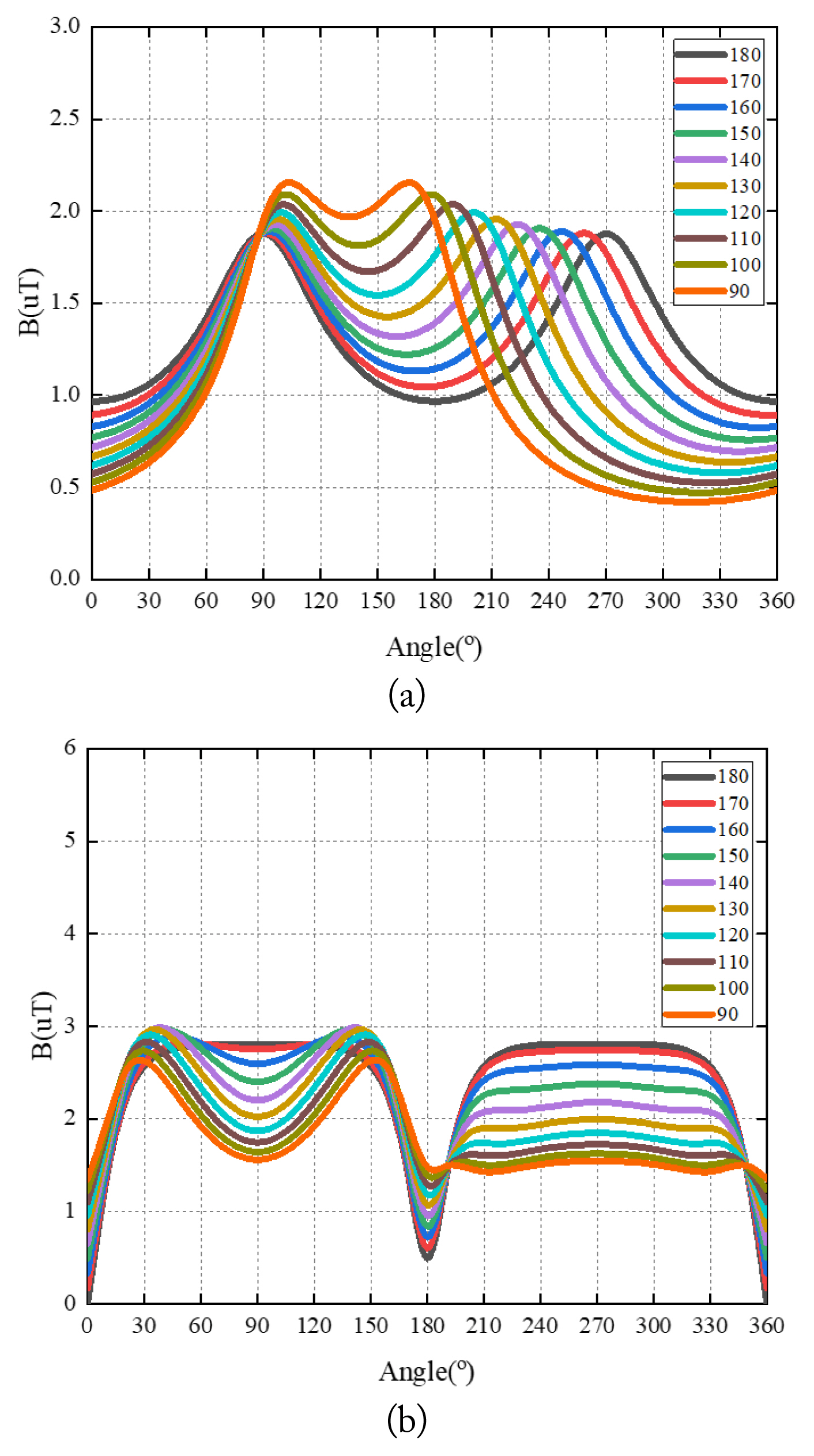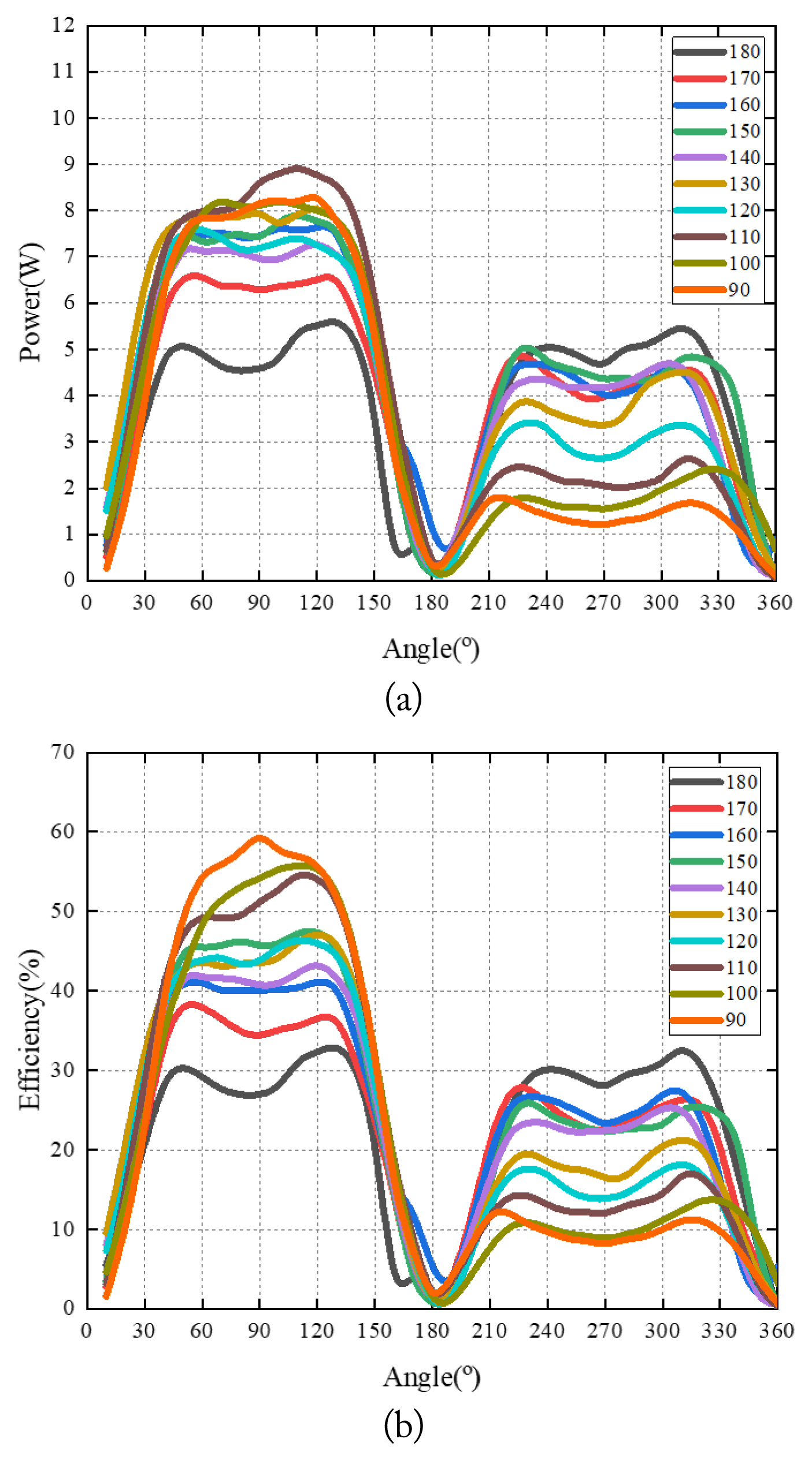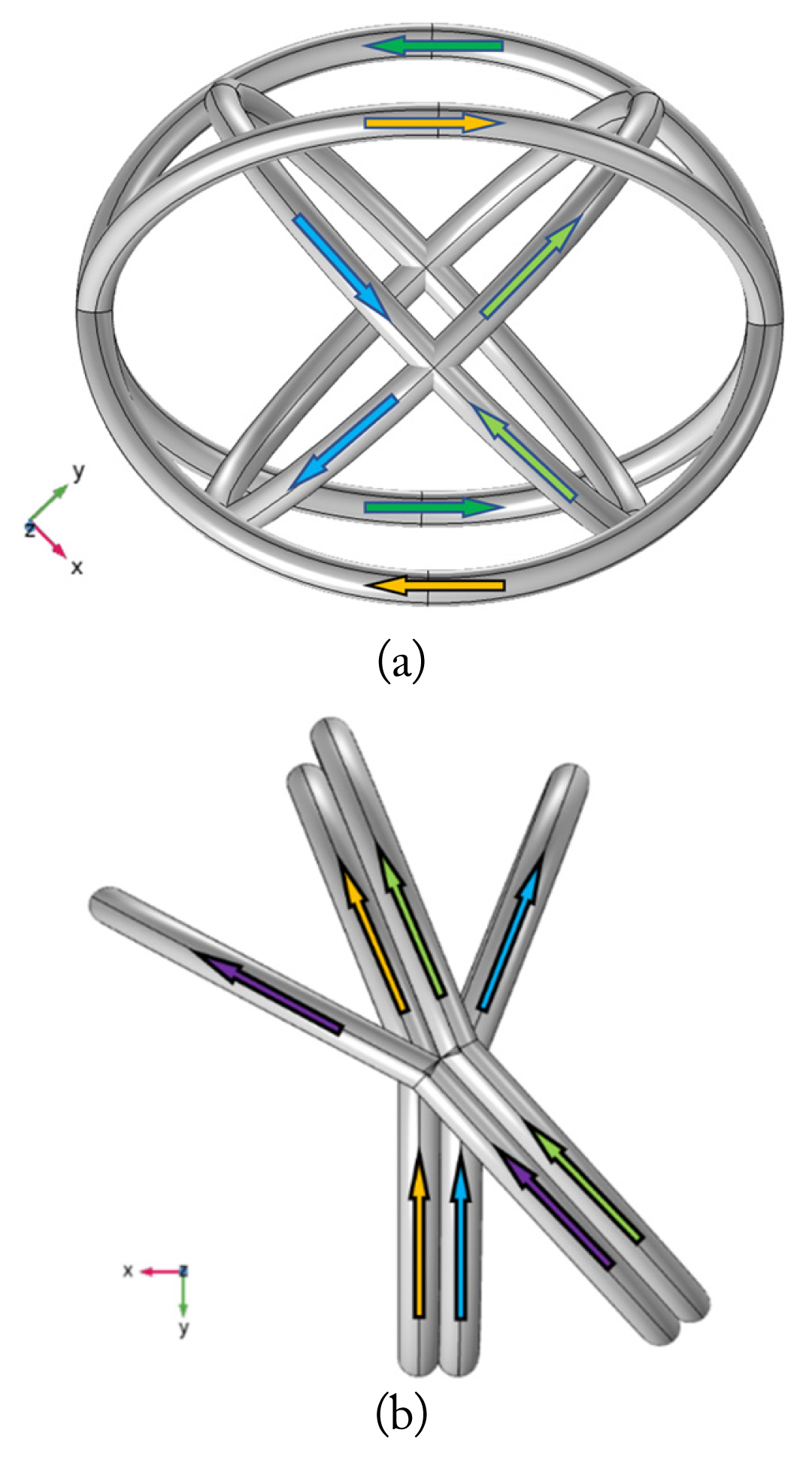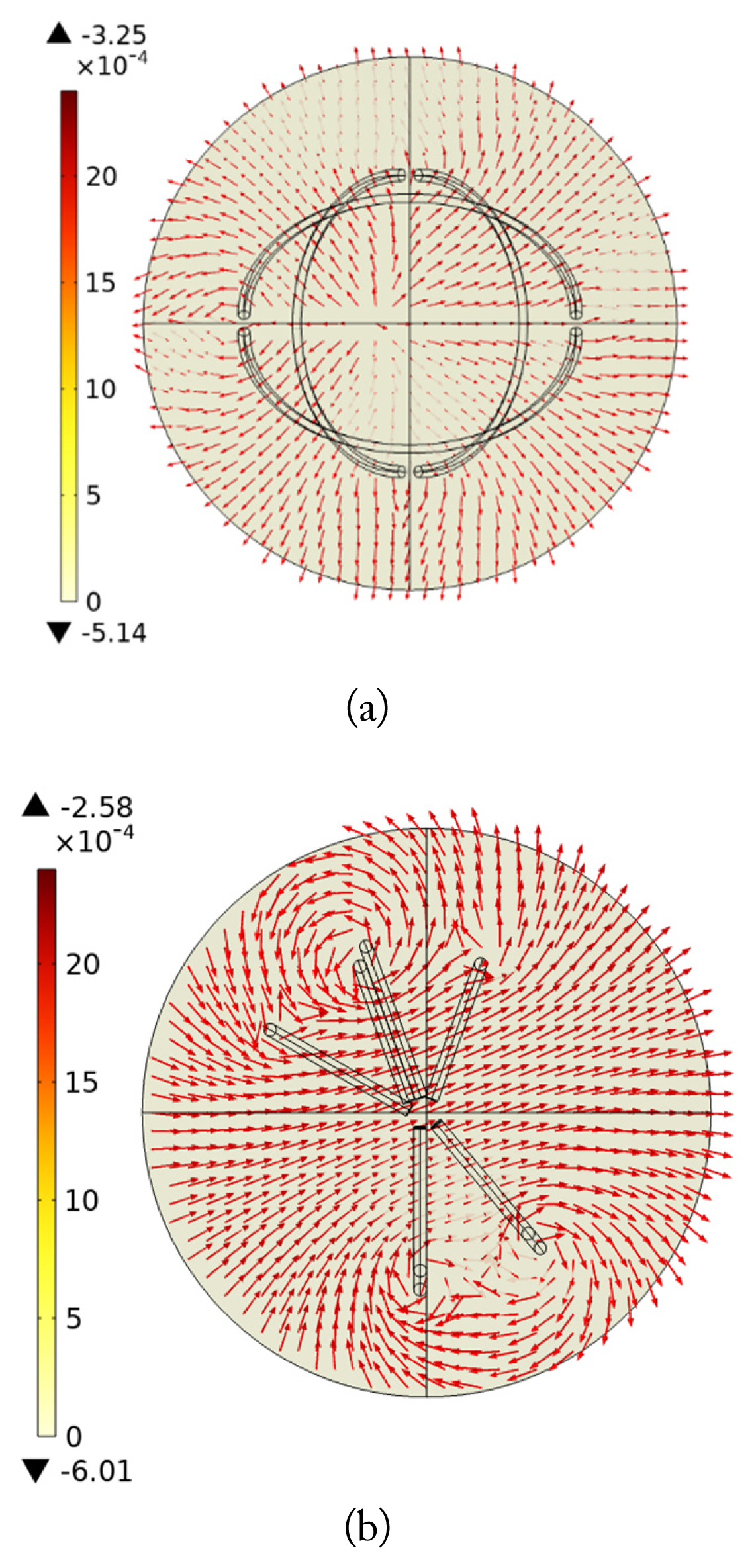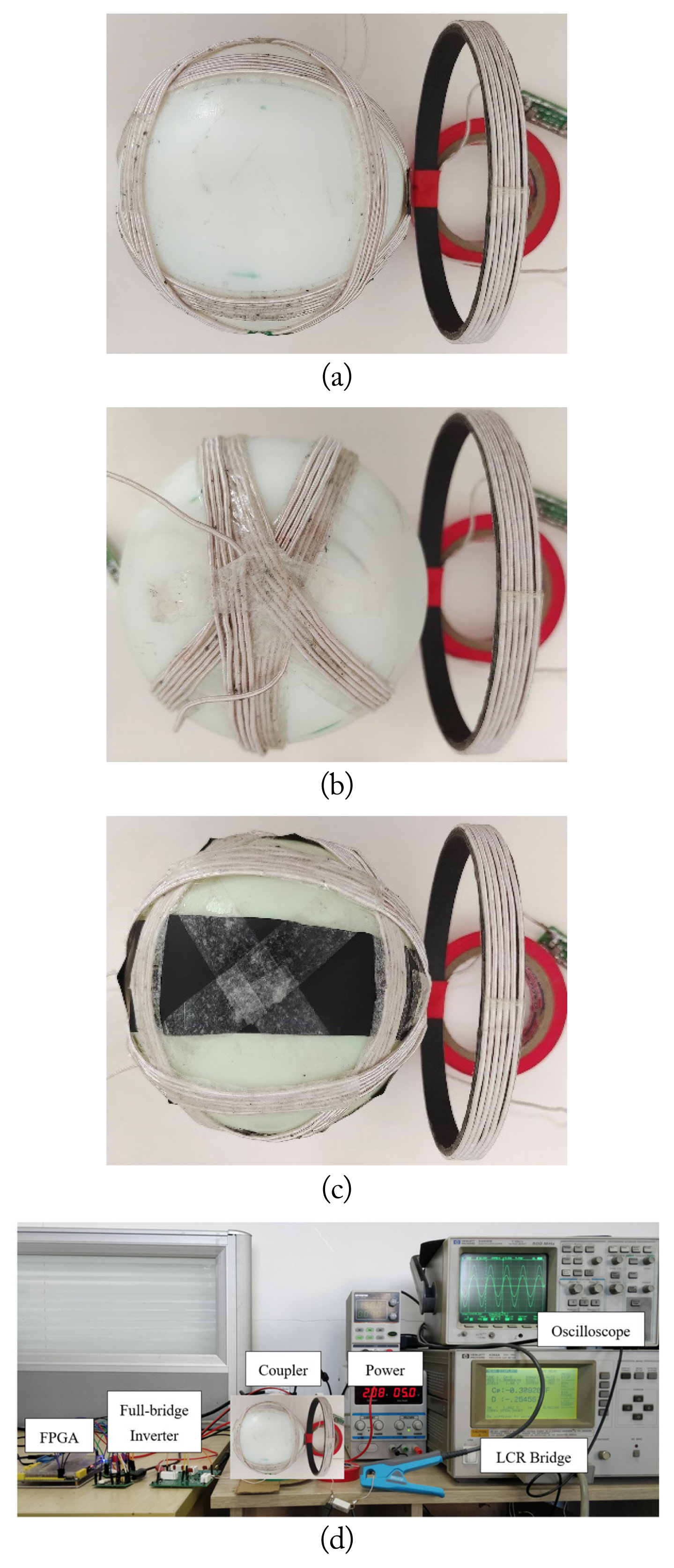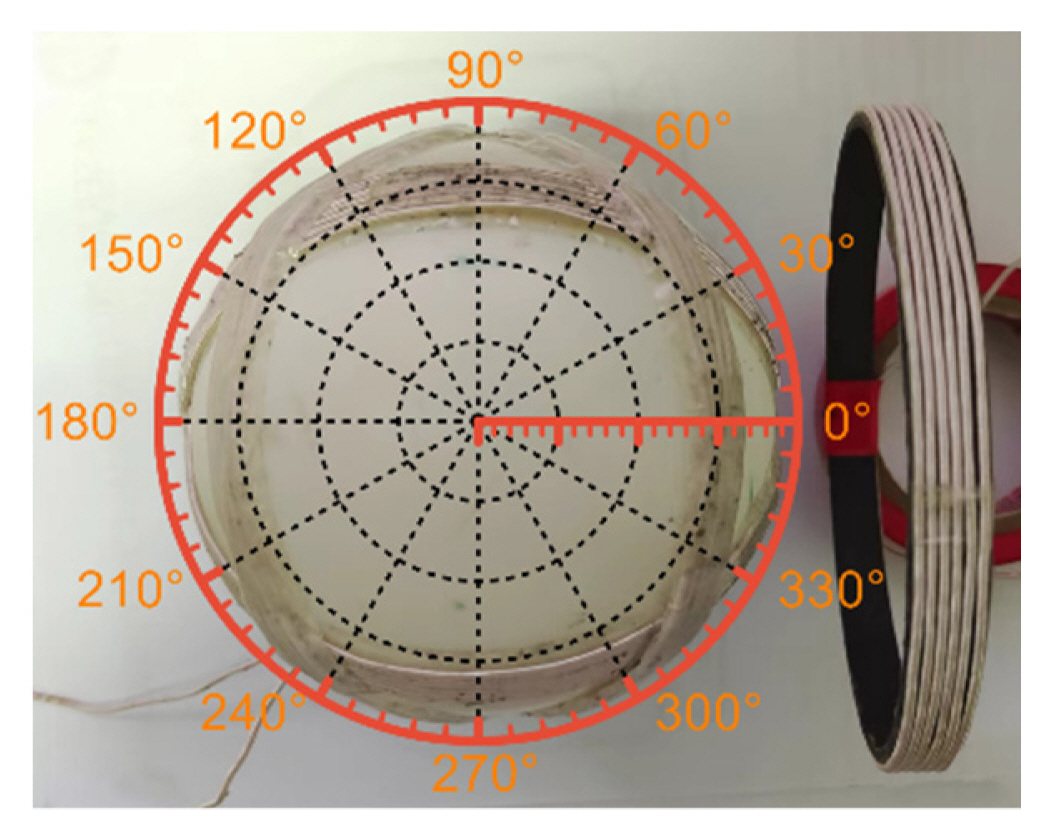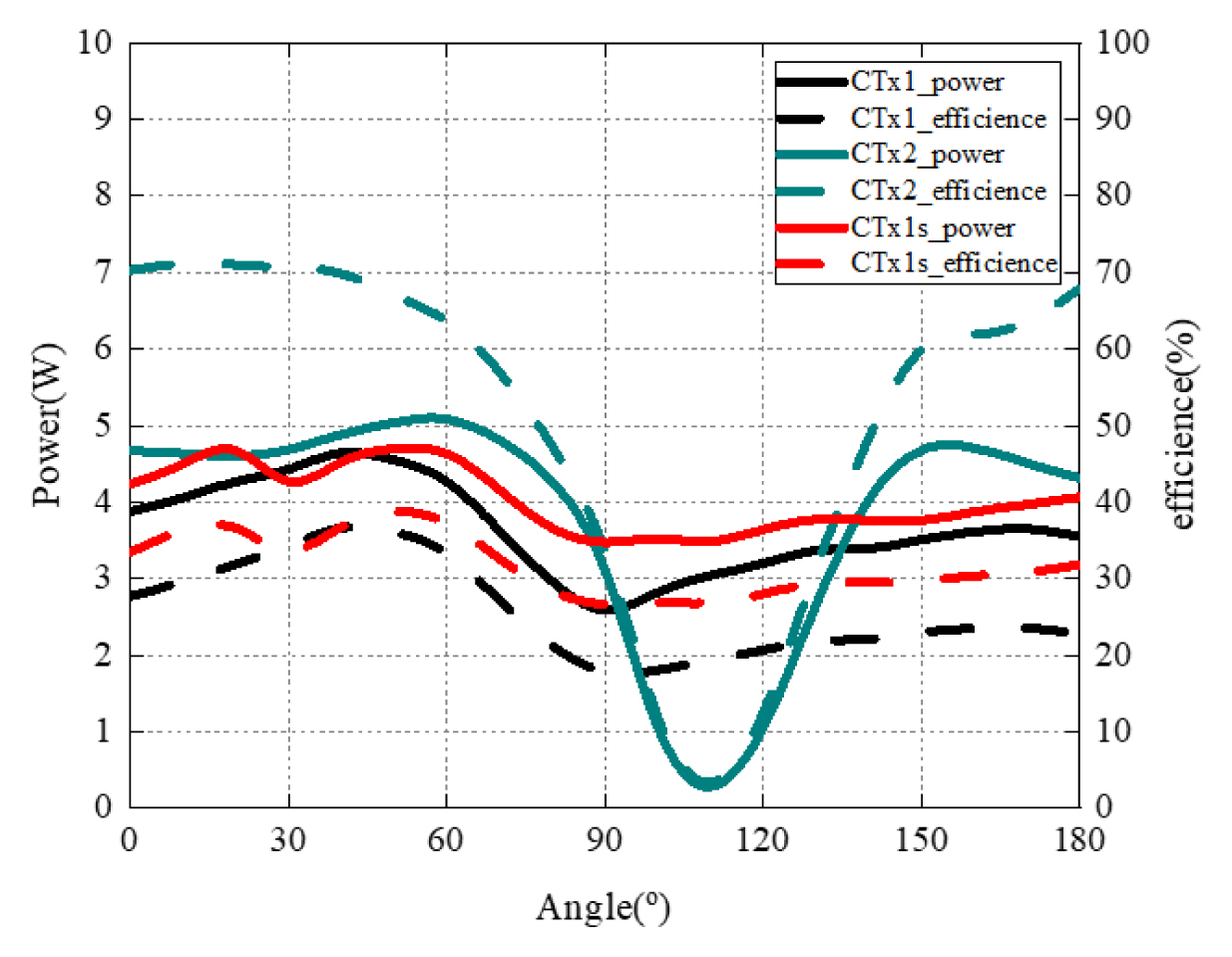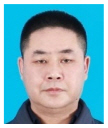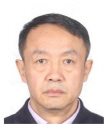1. S.H. Kang and C.W. Jung, "Magnetic resonant wireless power transfer with rearranged configurations,"
Journal of Electromagnetic Engineering and Science, vol. 17, no. 2, pp. 76ŌĆō85, 2017.

2. J. Park, J. Kim, Y. Shin, B. Park, W.S. Kim, S.J. Cheong, and S. Ahn, "Toroidal-shaped coils for a wireless power transfer system for an unmanned aerial vehicle,"
Journal of Electromagnetic Engineering and Science, vol. 19, no. 1, pp. 48ŌĆō55, 2019.


3. X. Dai, X. Li, Y. Li, and A.P. Hu, "Maximum efficiency tracking for wireless power transfer systems with dynamic coupling coefficient estimation,"
IEEE Transactions on Power Electronics, vol. 33, no. 6, pp. 5005ŌĆō5015, 2018.

4. O. Jonah, S.V. Georgakopoulos, and M.M. Tentzeris, "Orientation insensitive power transfer by magnetic resonance for mobile devices," In:
Proceedings of the 2013 IEEE Wireless Power Transfer (WPT); Perugia, Italy. 2013, pp 5ŌĆō8.

5. B.H. Choi, E.S. Lee, Y.H. Sohn, G.C. Jang, and C.T. Rim, "Six degrees of freedom mobile inductive power transfer by crossed dipole Tx and Rx coils,"
IEEE Transactions on Power Electronics, vol. 31, no. 4, pp. 3252ŌĆō3272, 2016.

6. C. Rong, X. He, M. Liu, Y. Wang, X. Liu, C. Lu, Y. Zeng, and R. Liu, "Omnidirectional free-degree wireless power transfer system based on magnetic dipole coils for multiple receivers,"
IEEE Access, vol. 9, pp. 81588ŌĆō81600, 2021.

7. N. Ha-Van and C. Seo, "Analytical and experimental investigations of omnidirectional wireless power transfer using a cubic transmitter,"
IEEE Transactions on Industrial Electronics, vol. 65, no. 2, pp. 1358ŌĆō1366, 2018.

8. W. Han, K.T. Chau, C. Jiang, W. Liu, and W.H. Lam, "Design and analysis of quasi-omnidirectional dynamic wireless power transfer for fly-and-charge,"
IEEE Transactions on Magnetics, vol. 55, no. 7, article no. 8001709, 2019.
https://doi.org/10.1109/TMAG.2019.2895716

9. H.R. Cha, K.R. Park, T.J. Kim, and R.Y. Kim, "Design of magnetic structure for omnidirectional wireless power transfer,"
IEEE Transactions on Power Electronics, vol. 36, no. 8, pp. 8849ŌĆō8860, 2021.

10. J. Feng, Q. Li, F.C. Lee, and M. Fu, "Transmitter coils design for free-positioning omnidirectional wireless power transfer system,"
IEEE Transactions on Industrial Informatics, vol. 15, no. 8, pp. 4656ŌĆō4664, 2019.

11. C. Lu, X. Huang, X. Tao, X. Liu, C. Rong, Y. Zeng, and M. Liu, "Design and analysis of an omnidirectional dual-band wireless power transfer system,"
IEEE Transactions on Antennas and Propagation, vol. 69, no. 6, pp. 3493ŌĆō3502, 2021.

12. J. Li, Y. Yang, H. Yan, C. Liu, L. Dong, and G. Wang, "Quasi-omnidirectional wireless power transfer for a sensor system,"
IEEE Sensors Journal, vol. 20, no. 11, pp. 6148ŌĆō6159, 2020.

13. P. Jayathurathnage, X. Dang, C.R. Simovski, and S.A. Tretyakov, "Self-tuning omnidirectional wireless power transfer using double-toroidal helix coils,"
IEEE Transactions on Industrial Electronics, vol. 69, no. 7, pp. 6828ŌĆō6837, 2022.

14. Z. Zhang and B. Zhang, "Angular-misalignment insensitive omnidirectional wireless power transfer,"
IEEE Transactions on Industrial Electronics, vol. 67, no. 4, pp. 2755ŌĆō2764, 2020.

15. B.J. Che, G.H. Yang, F.Y. Meng, K. Zhang, J.H. Fu, Q. Wu, and L. Sun, "Omnidirectional non-radiative wireless power transfer with rotating magnetic field and efficiency improvement by metamaterial,"
Applied Physics A, vol. 116, pp. 1579ŌĆō1586, 2014.


16. Q. Zhu, M. Su, Y. Sun, W. Tang, and A.P. Hu, "Field orientation based on current amplitude and phase angle control for wireless power transfer,"
IEEE Transactions on Industrial Electronics, vol. 65, no. 6, pp. 4758ŌĆō4770, 2018.

17. D. Lin, C. Zhang, and S.R. Hui, "Mathematical analysis of omnidirectional wireless power transferŌĆöPart-I: Two-dimensional systems,"
IEEE Transactions on Power Electronics, vol. 32, no. 1, pp. 625ŌĆō633, 2017.

18. D. Lin, C. Zhang, and S.R. Hui, "Mathematic analysis of omnidirectional wireless power transferŌĆöPart-II: Three-dimensional systems,"
IEEE Transactions on Power Electronics, vol. 32, no. 1, pp. 613ŌĆō624, 2017.

19. H. Wang, C. Zhang, Y. Yang, H.W.R. Liang, and S.Y.R. Hui, "A comparative study on overall efficiency of two-dimensional wireless power transfer systems using rotational and directional methods,"
IEEE Transactions on Industrial Electronics, vol. 69, no. 1, pp. 260ŌĆō269, 2022.

20. G. Liu, B. Zhang, W. Xiao, D. Qiu, Y. Chen, and J. Guan, "Omnidirectional wireless power transfer system based on rotary transmitting coil for household appliances,"
Energies, vol. 11, no. 4, article no. 878, 2018.
https://doi.org/10.3390/en11040878

21. N. Ha-Van and C. Seo, "Modeling and experimental validation of a butterfly-shaped wireless power transfer in biomedical implants,"
IEEE Access, vol. 7, pp. 107225ŌĆō107233, 2019.

22. Y. Wang, P. Gu, Y. Yao, and D. Xu, "Analysis and design of cubic magnetic coupler for high distance-to-diameter ratio IPT systems,"
IEEE Transactions on Industrial Electronics, vol. 69, no. 1, pp. 409ŌĆō419, 2022.

23. L. Tan, R. Zhong, Z. Tang, T. Meng, and X. Huang, "Power stabilisation scheme design using spatial rotating coil based on magnetic field aggregation,"
IET Power Electronics, vol. 13, no. 12, pp. 2511ŌĆō2522, 2020.


24. Z. Wei and B. Zhang, "Transmission range extension of PT-symmetry-based wireless power transfer system,"
IEEE Transactions on Power Electronics, vol. 36, no. 10, pp. 11135ŌĆō11147, 2021.

25. X. Chen, X. Fu, C. Jiang, C. Pei, and F. Liu, "Magnetic-field-model and circuit-model based analysis of three-phase magnetically coupled resonant wireless power transfer systems with cylinder-shaped coils," Journal of Power Electronics, vol. 18, no. 4, pp. 1154ŌĆō1164, 2018.
26. L. Tan, R. Zhong, Z. Tang, T. Huang, X. Huang, T. Meng et al., "Power stability optimization design of three-dimensional wireless power transmission system in multi-load application scenarios,"
IEEE Access, vol. 8, pp. 91843ŌĆō91854, 2020.

27. N. Ha-Van, Y. Liu, P. Jayathurathnage, C.R. Simovski, and S.A. Tretyakov, "Cylindrical transmitting coil for two-dimensional omnidirectional wireless power transfer,"
IEEE Transactions on Industrial Electronics, vol. 69, no. 10, pp. 10045ŌĆō10054, 2022.





